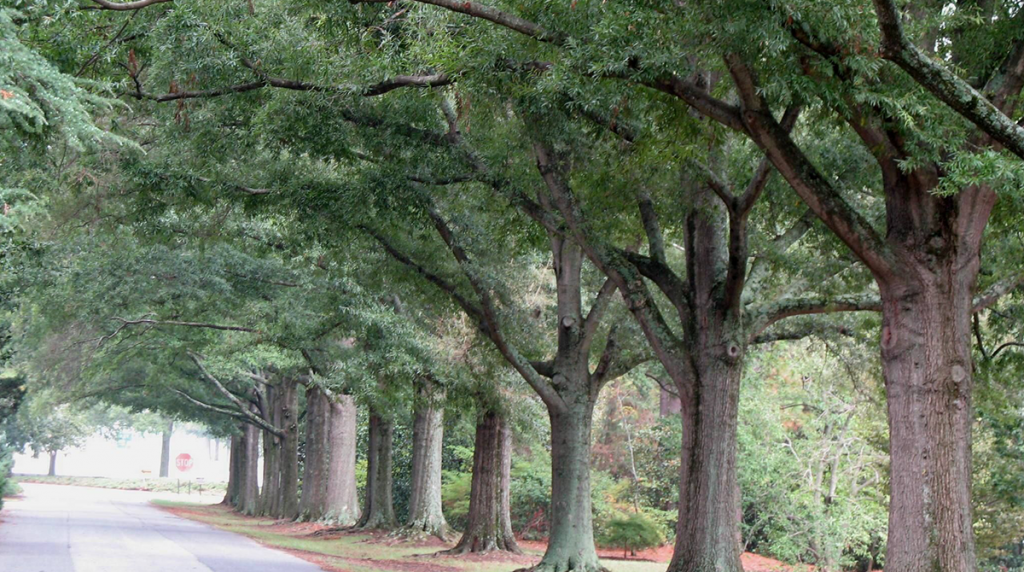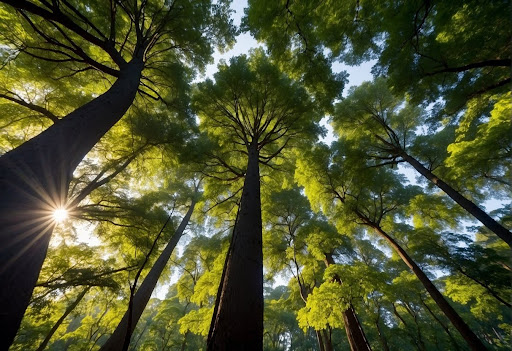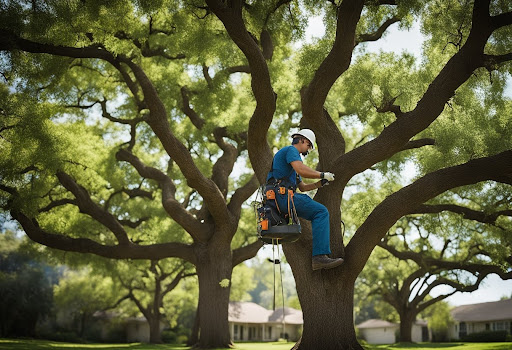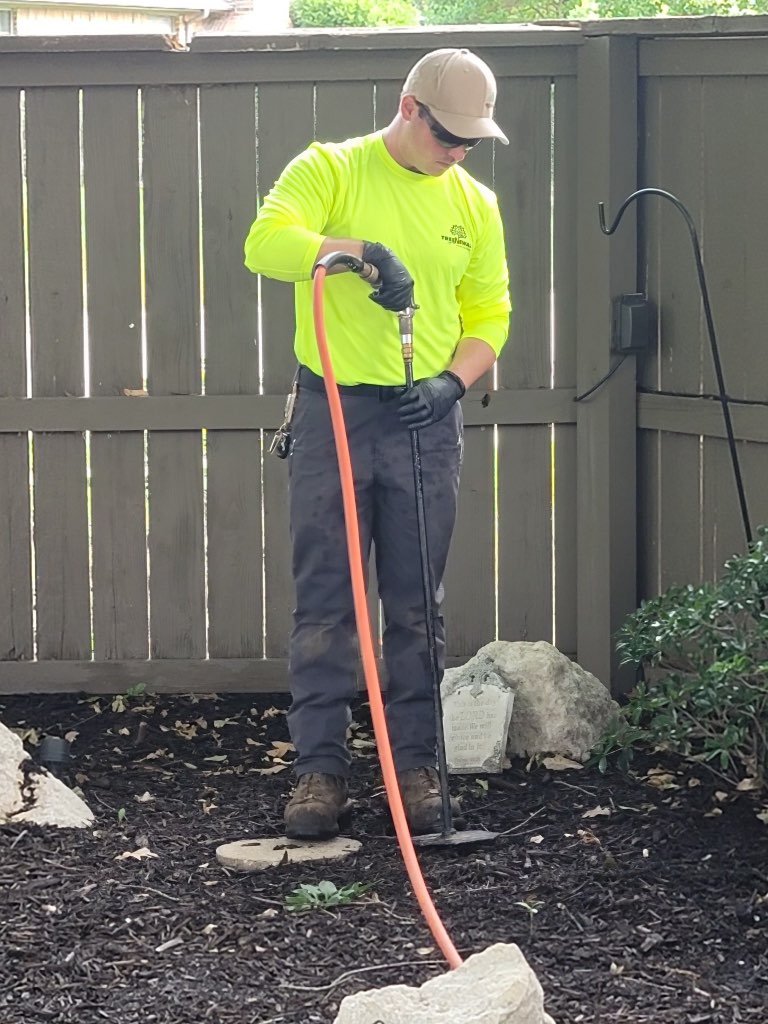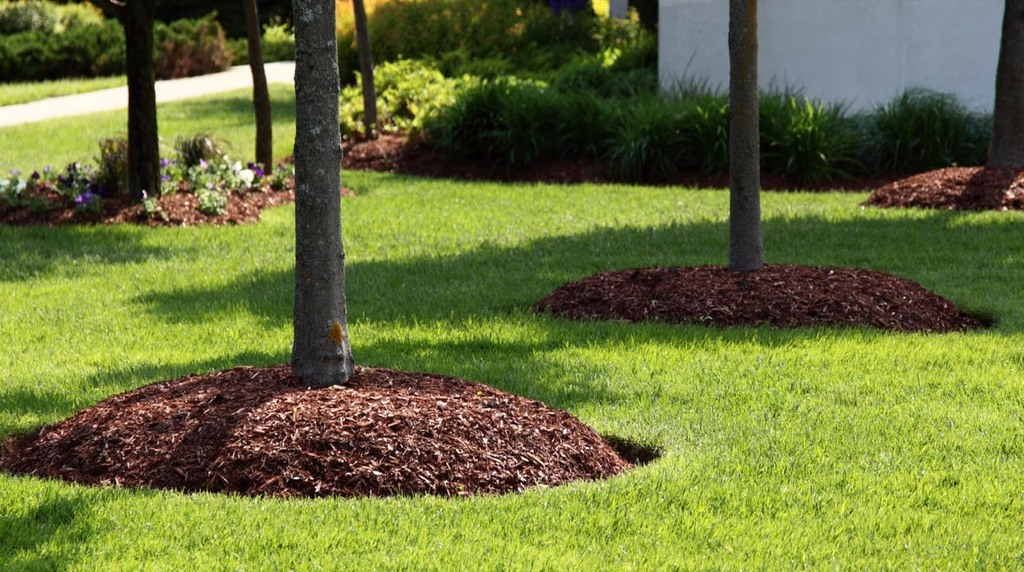
Date December 03, 2020
Category
Trees require a lot of care. One of the best ways to care for a tree is through mulching. Many people wonder whether they should mulch around their trees and if there are any rules to mulching. Adding mulch to a tree is a fairly easy task, and it will help protect and promote the tree’s health. Mulching is also a form of aesthetic since it beautifies the landscape. However, there are some things you need to keep in mind while mulching trees. If you don’t add the mulch properly, it can actually do more damage than good. Continue reading to find out more.
What Are The Types Of Mulch?
Organic wood chips are generally the best mulch for trees, but various wood chip products can help produce better tree growth. Organic mulches include hardwood, compost, pinewood, leaves, and pine needles that can add valuable nutrients to the soil.
There are also inorganic mulch types on the market that use stones, rubber, and sometimes lava rock. There may be some scenarios where these are useful, but they do not provide as much benefit as organic mulches do. They can also trap much more heat in the soil, damaging if the soil temperature gets too hot.
What Are The Benefits Of Mulching?
Mulch benefits trees in many ways, but probably most importantly, the nutrients in mulch foster tree growth. The wood chips in good mulch are usually a combination of bark, sapwood, and leaves. These organic materials will break down over time as earthworms, and other insects do their work, adding important nutrients to the soil. Grass can steal nutrients and water from a tree’s root system, slowing development, so the mulch helps retain moisture and regulate the soil temperature around your tree. Mulching also prevents weed growth and prevents damage to trees from weed whips and lawnmowers. Not all mulching is created equally, though, so make sure you follow these next guidelines to ensure it is done properly.
How to Mulch A Tree
When it comes to mulching, think of a donut. The hole of the donut represents where the tree trunk is located. It is best to mulch trees starting 3 to 6 inches from the trunk. You can then spread the mulch out in all directions for at least 3 feet. For long-term use and increased growth, you can start at six feet. You should ensure that the thickness of the mulch is between 2 to 4 inches. You do not need a lot of mulch to accomplish the benefits and should not pile the mulch up tall against the base tree. Remember that after some time, the mulch breaks down next to the trunk, so it would help if you replenished your mulch ring yearly as part of maintenance.
Dangers of Over Mulching
You can buy good mulch for trees but still not get the best results of your mulching if not done correctly. It’s common to see trees over mulched for the sake of the aesthetic. However, if the mulch smothers the root zone and root flare and extends up the trunk, it is known as volcano mulching. This process is not recommended and should be avoided. Excessive mulch usage can lead to major health problems for your tree and, in the end, is a waste of money!
What Are The Problems Associated With Over Mulching?
- Root suffocation and oxygen starvation: Root systems of a tree need oxygen for proper growth and function. If too much mulch covers the ground, it does not allow air penetration; hence the soil below becomes depleted of oxygen, and the roots can suffer.
- Inner bark death: If the mulch around trees covers the trunk tissues and root flare, they will stay wet continuously. These root tissues cannot survive under such conditions.
- Disease: Microbial growth requires moisture, and using too much excess mulch can trap too much water, causing the bark to decay. This can create a condition where diseases can enter through the wet, decaying bark. After development, these microorganisms can lead to root rots and fungal cankers. Fungal cankers encircle the tree, which leads to inner bark death, starving the roots, and potentially killing the tree.
- Insects: Carpenter ants and termites also love moisture, so excessive mulch attracts them as well. Eventually, your tree may require pest treatment if the ants and termites take over.
- Rodent Attraction: When adding mulch for fruit trees and other types of trees, you need to use the right technique. Otherwise, mice and other rodents can seek shelter in deep piles of excessive mulch. These rodents feast on the inner bark for food, and if the damage is excessive, the tree can end up dying. People tend to notice rodents’ effects during spring when the tree does not produce any leaves as expected.
- Excessive heat: After the start of decomposition, the excess wet mulch might heat up. Temperature levels can go up 140 degrees, killing the inner bark or phloem of recently planted trees. This can delay the drying process that a plant goes through in preparation for winter, affecting your trees’ health.
How To Correct Over Mulched Trees?
Do you have a problem with over-mulched trees? If you bought the best mulch for trees and shrubs, but now you think you may have over mulched it, then the first thing you should do is use a hand trowel to dig and assess mulch depth. One vital thing to remember is that a tree only requires 2 to 4 inches of mulch. To freshen old mulch, do a light lapse to freshen and break through the mulch stuck together.
It is good practice to uncover the flare located in the tree and soil line’s meeting point. Carefully remove the mulch from the trunk until the root flare is visible. Spread the mulch until it is 4 inches in depth. You should ensure that the mulch is 3 to 5 inches away and 8 to 10 inches away from grown trees for young trees. If you are confused about how to mulch properly or want an assessment to see if your tree health has been affected by excessive mulching practices, please don’t hesitate to consult with our ISA Certified Arborists can point you in the right direction.
Your neighbors at TreeNewal are here to help you. To reach our ISA Certified Arborists for professional tree maintenance and tree services, or even if you have some questions, give us a call today at tel:(817) 592-6846
To learn more about How to Mulch Around A Tree, call our Argyle and Southlake based teams
at tel:(817) 592-6846 or send us a message.
We’re a little different than the average tree services company.
Learn more about TreeNewal’s ISA Certified Arborists!
Our Dallas/Fort Worth-based tree doctors can explain how sustainable tree care services add more value to your bottom line.
Healthy trees, healthy lives.
